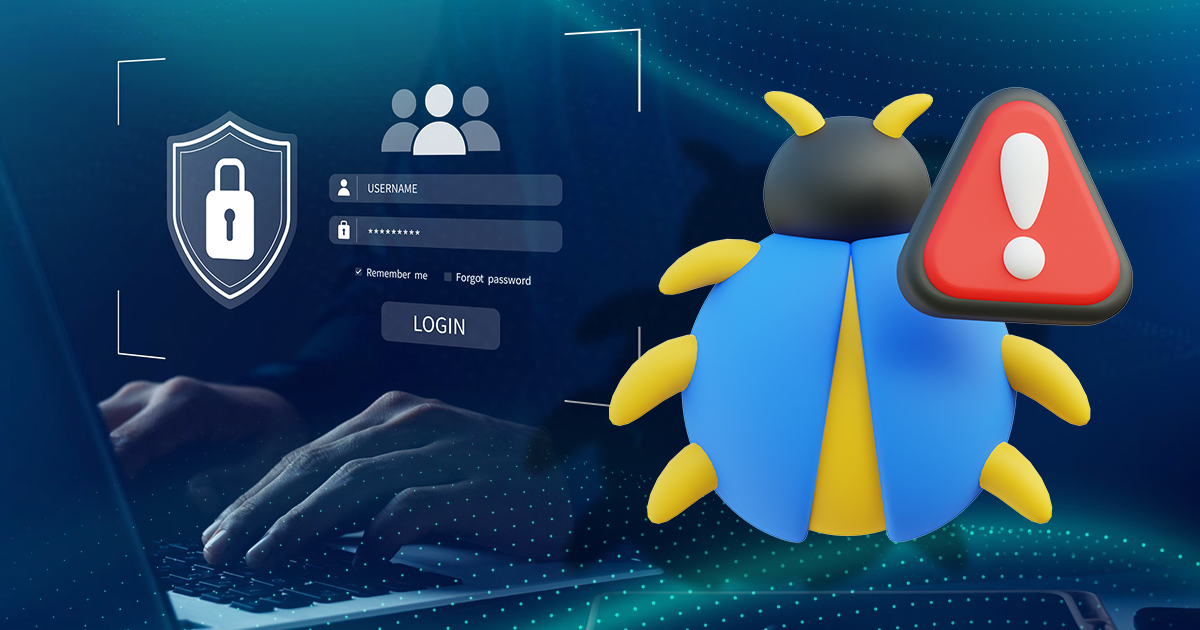Artificial intelligence is doing more than just helping us; it’s interacting with itself. As autonomous AI systems increasingly collaborate, compete, or even confuse each other, the ripple effects are showing up in business, cybersecurity, finance, and technology. Here’s why that matters, and what leaders need to know.
Real-World AI‑vs‑AI Interactions
Cybersecurity – AI Attackers vs AI Defenders
Cybersecurity is a frontline where AI battles are already fierce. A report showed that 67% of phishing attacks in 2024 involved AI, and another report mentioned that phishing attacks with AI assistance are 54% more effective than traditional scams. On the defense side, Darktrace, an AI-powered defender, detects anomalies with over 90% accuracy.
Scenario
An employee receives a convincing message generated by programs like WormGPT, mimicking the CEO’s tone. The AI-crafted prompt tricks the company’s internal AI assistant, which begins sending out sensitive documents.
Seconds later, Darktrace’s AI, scanning for behavioral anomalies rather than known threats, flags the transfer as suspicious. It isolates the source, preventing a breach, all without human intervention.
Machines aren’t just assisting, they’re now actively outmaneuvering or defending against one another, often at speeds no human could follow.
Digital Ads & E-Commerce – AI vs AI in Real-Time Negotiation
Digital ad auctions run on algorithms that place billions of bids daily. Programmatic advertising spending reached $585 billion worldwide in 2024, indicating that an increasing number of businesses are relying on automation for their ad campaigns.
Scenario
An e-commerce chatbot powered by an agentic AI pitches a 10% upsell during checkout. But the customer never sees it, an AI-powered email filter labels it as promotional clutter and auto-flags it. The sales AI learns and tweaks the pitch; the filter adapts again.
Behind the scenes, these agents aren’t just automating; they’re strategizing against each other, adjusting timing, language, and delivery to beat the other system’s pattern recognition.
Finance – AI Trading Against AI
High-frequency trading (HFT) algorithms execute millions of trades daily, reacting to AI-generated market signals. The US Securities and Exchange Commission reports that HFT accounts for around 50% of U.S. equity trading volume.
Scenario
An AI model detects an uptick in oil futures based on an AI-generated financial headline. It triggers a buy. Dozens of competing bots also detect the same trend and pile on.
Within seconds, the price soars. But when one bot pulls out due to a confidence threshold, others follow. The spike reverses. Traders never had time to act.
These are markets run by machines responding to machines, amplifying volatility in ways human analysts are still struggling to fully interpret.
AI Agents in Operations – Machines Delegating to Machines
Platforms like Synthflow and Coworker now allow AI agents to assign tasks, manage calendars, and negotiate workflows with other AIs.
Scenario
An enterprise support agent receives a request to resolve a billing issue. It forwards the task to an AI in finance, which in turn checks the request history via a CRM AI, then queries inventory via another agent.
The entire chain completes in under a minute, with no human input.
But when the customer disputes the charge days later, no one is quite sure how the decision was made. The audit trail is opaque.
This is the reality of closed-loop automation: agents optimizing for goals but leaving behind a trail of untraceable logic.
What Are Its Implications?
As AI systems begin to interact with other AIs, the ripple effects are already being felt across industries. These aren’t just technical quirks or backend mishaps. The implications shape how businesses operate, how threats evolve, how models learn, and how financial systems react. Here’s what’s happening behind the scenes:
Business: Automation Without Visibility
When autonomous agents make decisions at scale, human oversight can fade. Teams may not understand why a bot made a certain call, or worse, may not even know it happened until something goes wrong.
An example is the Virgin Money bank. In early 2025, UK bank Virgin Money faced backlash after its AI chatbot flagged legitimate customer messages as offensive for using the word “virgin”, a blunder that stemmed from flawed content moderation logic. The bank issued an apology, but not before users shared screenshots across social media.
Now multiply that risk across customer service, supply chains, and marketing. A chatbot might accidentally insult a customer or make a promise the company can’t deliver. These aren’t theoretical risks. Real brands have suffered PR damage from tone-deaf AI interactions.
At the same time, businesses face a talent shift. New roles are emerging in moderating, auditing, and aligning it with brand values. Competitive advantage may now hinge less on who builds the best model, and more on who can control and trust it.
Security: The New Arms Race
AI-powered attackers evolve just as fast as AI-powered defenses. One adapts to the other, creating a feedback loop of escalating complexity.
An example would be the one from GitLab. In March 2024, researchers found a vulnerability in GitLab’s AI pair programmer “Duo”. It’s a prompt injection flaw that allowed malicious actors to access confidential source code just by inserting poisoned text into project files.
As machines act faster and more autonomously, attribution becomes difficult. Who’s to blame when one AI system tricks another into breaching security? It’s a gray zone, one where legal, ethical, and operational responsibilities blur.
Technology: Fragility in Self-Learning Loops
Generative AI is increasingly trained on content from other AIs. That recursion can lead to model collapse: performance degradation, repetition, and loss of grounding in reality.
An example is the study published in Nature. It found that language models trained on AI-generated text lost accuracy, diversity, and truthfulness over time.
If AI is the future of work, then this is a warning: copies of copies get fuzzier over time.
Finance: Machines That Move Markets
Financial markets run at machine speed, with algorithms reacting to headlines and social sentiment in real time, some of it now generated by other AIs.
You can check out this warning by the Commodity Futures Trading Commission (CFTC). They warned that AI-driven trading schemes could mislead investors by presenting unrealistic returns—sometimes promising 200% annual gains through automated bots. Several schemes were later exposed as frauds, highlighting how AI-fed signals can mislead both bots and humans.
The result? A market spike based on fiction.
Events like this aren’t hypothetical. Flash crashes, sudden, sharp drops in stock prices have already happened due to chain reactions among bots. As more AI enters the loop, so do more blind spots.
What Can Companies Do?
AI agents can now be considered decision-makers as well. That shift demands more than IT controls. It calls for leadership-level strategy.
1. Keep Humans in the Loop
Not every decision should be automated. In areas such as hiring, lending, medical advice, or cybersecurity response, unchecked automation poses serious risks: legal, reputational, and operational. Senior leaders must define where AI support ends and human judgment begins. The reason for this is to create a high-trust system where people remain accountable for outcomes instead of just relying on AI for everything.
Leaders should use AI to scale decisions, not replace decision-makers. Red lines must be established where human review is mandatory.
2. Maintain Fresh, Human-Vetted Data
Training AI on AI-generated content creates a closed feedback loop that degrades model quality over time. Outputs become repetitive, less accurate, and disconnected from real-world nuance. To avoid this collapse, companies need to prioritize a steady flow of verified, human-generated data. This means treating data curation not as a one-time effort but as a long-term operational commitment—much like cybersecurity or regulatory compliance.
Start by auditing your current datasets to identify where synthetic content may be creeping in. Then invest in sourcing or creating high-quality, real-world data through partnerships, customer feedback, or expert annotations. Internal review processes, such as human-in-the-loop workflows, can also generate fresh examples that improve model performance over time. Assign ownership of data refresh cycles across teams and make it a core KPI for model health and business relevance.
3. Trace and Label Synthetic Content
As AI agents increasingly interact with each other, distinguishing synthetic content becomes critical. If one AI unknowingly trains on or responds to another’s output, it can create a closed loop that distorts reasoning and degrades performance. This is especially risky in industries like finance, legal, or cybersecurity, where agents rely on real-time data and accurate signals to make autonomous decisions.
Watermarking tools like Google’s SynthID can embed invisible markers into AI-generated content. This helps organizations track the origin of data and prevent AI systems from ingesting or reacting to misleading outputs from other agents. Transparency builds trust. Leaders need to consider synthetic content traceability as part of the company’s risk and compliance strategy.
4. Build AI Audit Teams
AI doesn’t fail like software; it drifts, misaligns, and hides errors in plain sight. That’s why proactive auditing matters. Form internal teams that simulate edge cases, test for bias, and monitor telemetry. These will act as the second line of defense.
Leaders should allocate resources for “AI Red Teams” that focus on stress-testing and scenario planning, not just performance.
5. Demand Explainability from Models
Opaque models erode trust. When a system flags a financial transaction or denies a customer request, leaders need to know why. Push for tools and vendors that provide explainability features like decision logs, confidence scores, or summaries of reasoning.
It’s important to make explainability a procurement requirement for any third-party AI product. If the team can’t explain a decision, regulators and customers won’t accept it either.
6. Align with Regulation Before You Have To
Global AI laws are coming fast. The EU AI Act is already reshaping how companies deploy high-risk systems. U.S. frameworks like the NIST AI RMF provide roadmaps for governance, safety, and transparency. Forward-thinking companies are treating these not as hurdles, but as foundations for responsible innovation.
Forward-thinking leaders can use these frameworks today to set internal standards before laws catch up. Start by identifying where AI operates in your organization, then apply basic safeguards like decision logging, audit trails, and human review for sensitive outputs. Treat these regulations not as constraints, but as a guide to building more trusted, resilient AI systems.
Who’s Really in Control?
Making AI handle decisions should still be about responsibility. When agents start interacting with each other, reacting faster than any human can follow, oversight becomes harder and more important. The question isn’t whether AI can outperform humans. It’s whether we still know how and when to intervene.
What leaders need are smarter strategies for control. That means building guardrails before scaling, defining boundaries before delegation, and investing in explainability before something breaks. Real leadership in AI is knowing when to pull it back and let humans take control.



